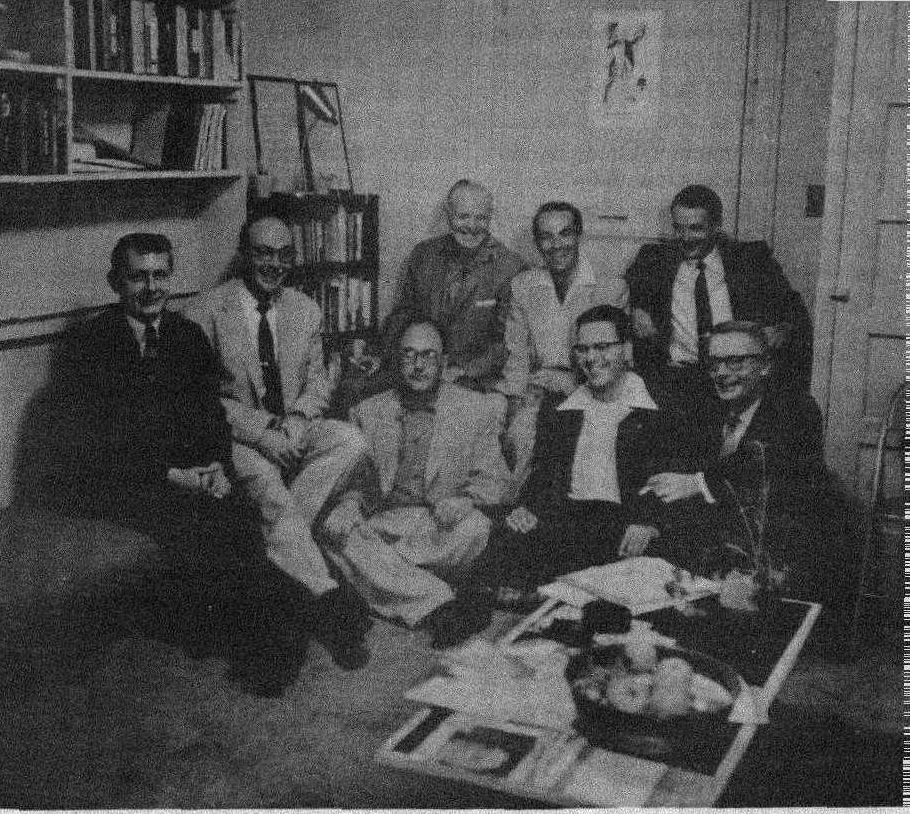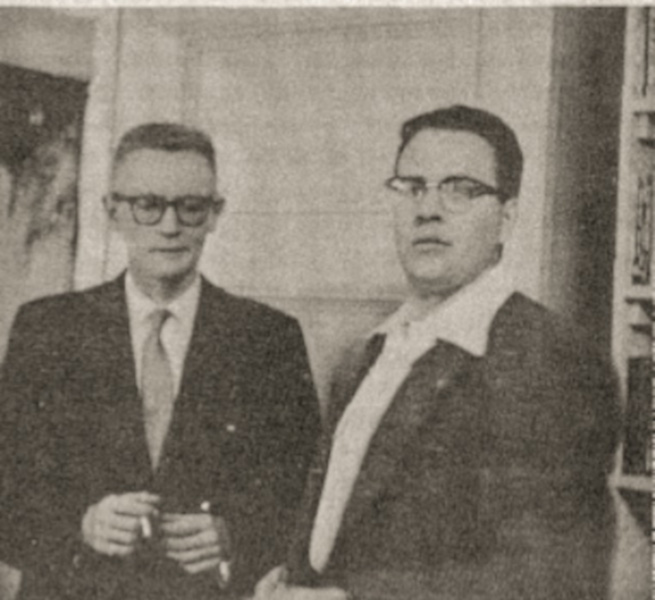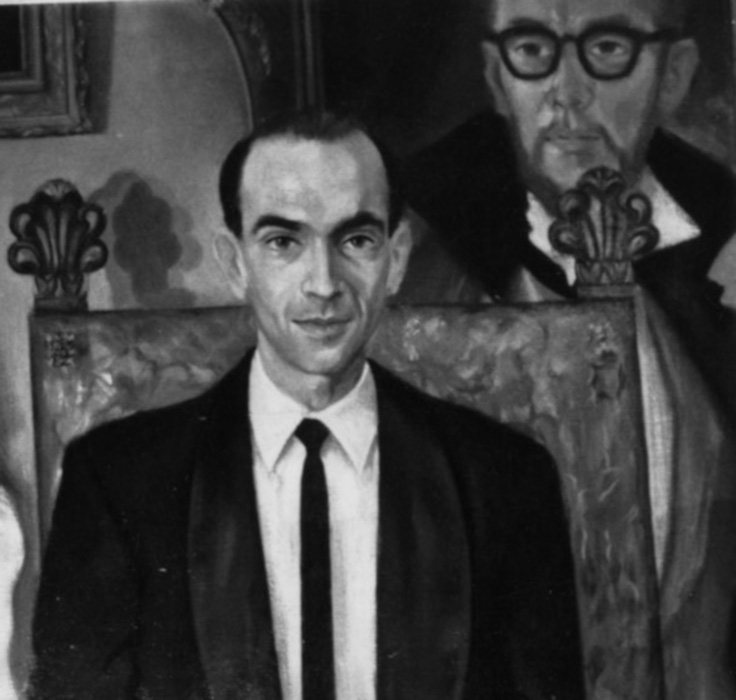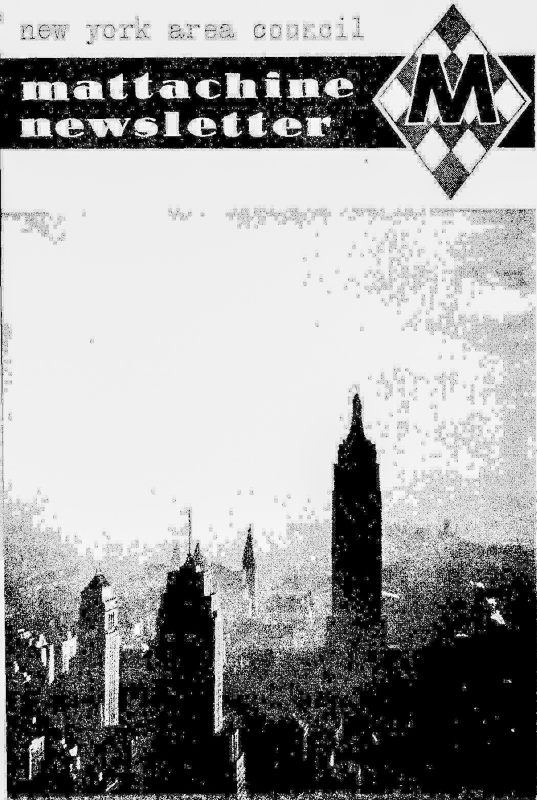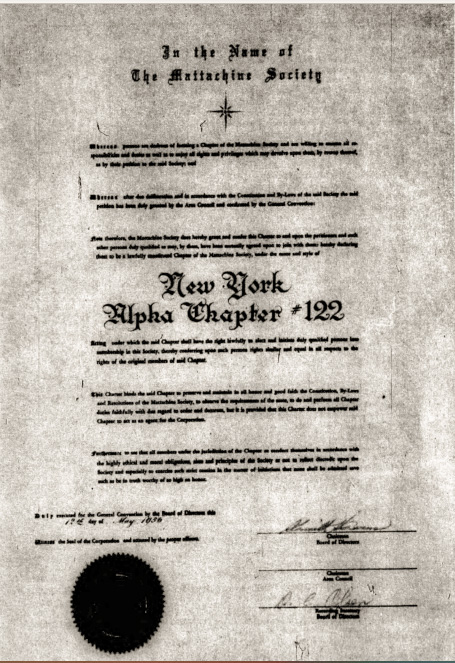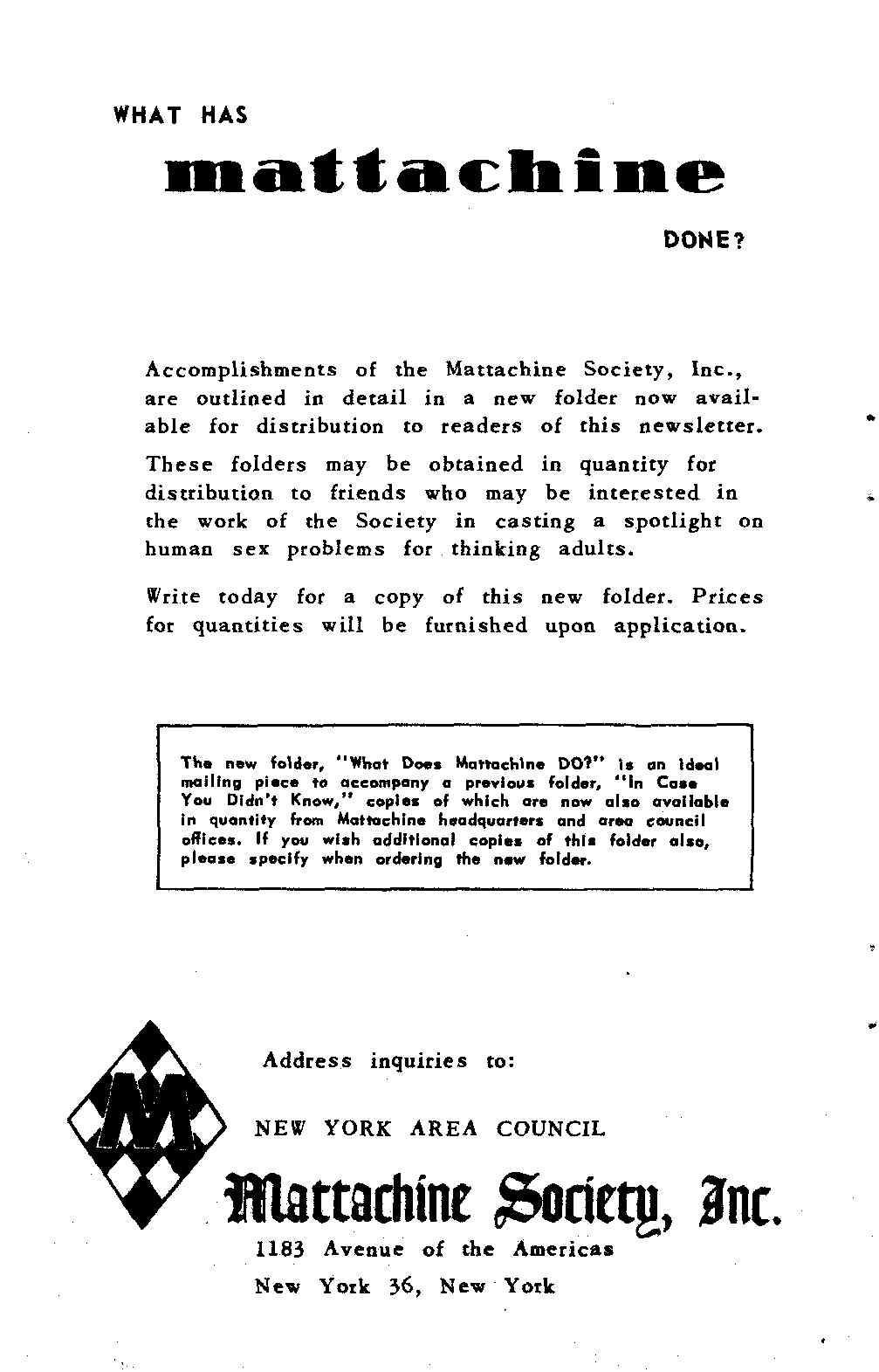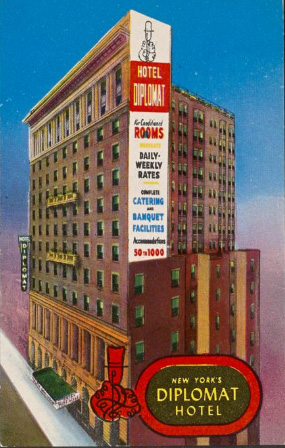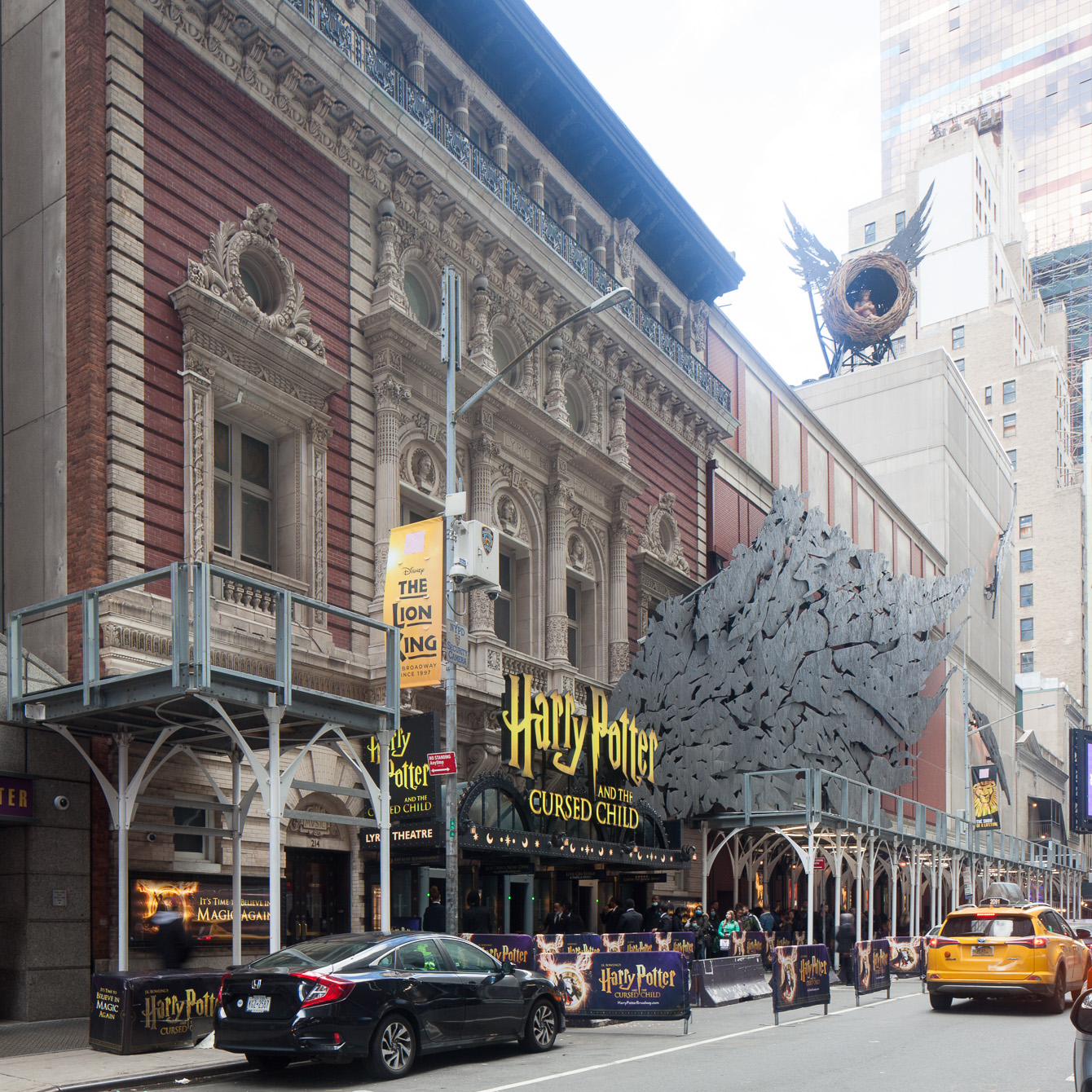
New York Area Council of the Mattachine Society, Inc. at Avlon Studios
part of the Lyric Theater
overview
The New York Area Council of the Mattachine Society, Inc., an early gay rights group, held its meetings at Avlon Studios in the Lyric Theater building from 1956 to 1957, shortly after forming in December 1955.
See the Lyric Theater for more information on this site’s LGBT history.
History
The Mattachine Foundation, the original, secret group that became the earliest sustained national American gay rights organization, was founded in Los Angeles in 1951 by Harry Hay and others. Its early leadership was replaced in 1953, and the Foundation was dissolved. The Mattachine Society was then incorporated in March 1954 as an open national organization with headquarters in San Francisco, and regional “area councils” were formed elsewhere. The New York Area Council of the Mattachine Society, Inc. was started on December 10, 1955, by Tony Segura and Sam Morford at Morford’s apartment in Greenwich Village.
After the first general meeting, on January 10, 1956, which was held at the Diplomat Hotel, 108 West 43rd Street (demolished), monthly general meetings were then held on the first Tuesday of the month, until June 1957, at Avlon Studios in the Lyric Theater building. This was a dance studio, and its use was arranged through the theater connections of Mary Dorn (a pseudonym), the sole woman then participating in the group. The New York Area Council of the Mattachine Society, Inc. was first listed in Mattachine Review in February 1956, as the fifth Mattachine council formed.
In a letter written after the April 1956 general meeting, Morford expressed, “I feel we’ve done well in enlarging our membership from the initial five as of December 10th, to fourteen at the present time.” The application for a council charter, which was granted in May 1956, listed Morford as chairman, Joe McCarthy as vice chairman, Curtis W. Neale as secretary, and Dorn as treasurer (she later became treasurer of the New York Chapter of the Daughters of Bilitis when it started in 1958), and the names of the 14 members. The New York Council began its Newsletter that May, and formed three “chapters” (committees) – Legal-Legislative, working on the issue of police entrapment; Editorial-Writing; and Educational-Research. The Council was intended solely as a social, educational, and research organization, and not one that would get politically involved or allow attention to be focused on its members, due to the conservative era in which it was founded.
At the national Mattachine meeting held that same month, Morford was elected Research Director, and Segura was elected Public Relations Director. Segura was also largely responsible for the first international edition of Mattachine Review in October 1956. In a letter written that month, Morford stated that “… I plan not to run for chairman of the area council when we have our elections in January and I want to find out who might be able to take over. I’ve had two and a half years of intensive work as an organizer and leader and I want out. Not that I won’t be working, I will – but I want to take a less active and responsible part – I’m not cut out for ‘heading up offices’.” A Christmas party was held on December 15, 1956, to celebrate the one-year anniversary of the group, which was by then the second largest Mattachine council.
At the general New York Council meeting on January 8, 1957, Morford was unanimously elected chairman, but he moved to San Francisco in May. Controversy and jealousies surrounding the affairs and criminal exploits of member Albert Ross Puryear, a young hustler and prison parolee, unfortunately created a schism between Morford and Segura. It was also the beginnings of a serious rift that developed between the New York council and San Francisco, that contributed to the eventual demise of the national organization. Morford was named Member of the Year at the 1957 Mattachine convention.
After Morford’s departure, the New York Council was run by McCarthy as chairman (he also served as national Mattachine chairman in 1958) and Segura as vice chairman. Now considered one of the most significant Hispanic early gay rights leaders, Segura was then called “the sparkplug of the whole organization here” and is credited as being the main person running the group early on, despite Morford being the chairman. Besides serving as Public Relations Director of national Mattachine, he was on the editorial board of Mattachine Review, and traveled around the country speaking at various councils. Segura was the first openly gay man on television on the East Coast on March 10, 1958 – on a panel with sexologist Albert Ellis on WABD’s “Showcase” – though under an assumed name and wearing a hood. Segura moved to Richmond, Virginia, in 1959, and was later a founding member of the Richmond Gay Rights Association in 1977.
The New York Area Council of the Mattachine Society, Inc. moved into an office on the fourth floor of 1183 Sixth Avenue (demolished) in July 1957. By the end of the year, it had 40 members and its chapters were eliminated. On January 4, 1958, they invited Russell P. Crawford, president of the New York branch of the NAACP, to speak, and he had to stay until midnight because of the many questions from attendees. This represents an early link between gay rights activists and the Black civil rights movement. Mattachine members reportedly “were also struck by the many similarities between the two organizations and the problems they face. As a result, many valuable lessons were learned from the older and more experienced organization.” On August 19, 1958, the “best attended meeting in the history of the Mattachine Society in New York,” with 300 people, was the result of placing some 300 large posters all over the city.
The group moved to an office in 1133 Broadway by December 1958. The national Mattachine organization was dissolved in 1961, and the councils became independent. The Mattachine Society of New York was officially incorporated on December 28, 1961.
See the Lyric Theater for more information on this site’s LGBT history.
Entry by Jay Shockley, project director (April 2022).
NOTE: Names above in bold indicate LGBT people.
Building Information
- Architect or Builder: Victor H. Koehler
- Year Built: 1903
Sources
“A Look Back – and Ahead,” New York Area Council of the Mattachine Society, Inc., Newsletter, January 1957.
Daniel Hurewitz, Stepping Out: Nine Walks Through New York City’s Gay and Lesbian Past (New York: Henry Holt & Co., 1997), 160.
FamilySearch.com, information on Samuel D. Morford.
“Finding Aid of the Mattachine Society Project Collection,” Online Archive of California, 2015.
James T. Sears, Behind the Mask of the Mattachine: The Hal Call Chronicles and the Early Movement for Homosexual Emancipation (New York: Routledge, 2011).
John D’Emilio, Sexual Politics, Sexual Communities: The Making of a Homosexual Minority in the United States, 1940-1970 (Chicago: University of Chicago Press, 1983), 89-90.
Mattachine Society, Inc., Application for Chapter Charter, 1956.
Mattachine Society, Inc., Mattachine Review, 1955-1961.
Michael Waters, “The Book Club That Helped Spark the Gay-Rights Movement,” The New Yorker, October 5, 2021.
“National Association for the Advancement of Colored People,” New York Area Council of the Mattachine Society, Inc., Newsletter, February 1958.
New York Area Council of the Mattachine Society, Inc., Newsletter, 1956-1961.
New York Area Council of the Mattachine Society, Inc., Treasurer’s Report, March 31, 1956.
“New York Chapter,” Mattachine Review, May 1956, 8-9.
“Official Honors to New York Chapter Members,” New York Area Council of the Mattachine Society, Inc., Newsletter, June 1956.
“Prominent Personalities on New York Programs, [Mattachine Society] Interim, May, 1957, 13.
Sam Morford, letters dated April 4 and October 24, 1956.
“The League,” in Marvin Cutler, edit., Homosexuals Today: a Handbook of Organizations & Publications (Los Angeles: ONE, Inc., 1956), 102-103.
Toby Marotta, The Politics of Homosexuality (Boston: Houghton Mifflin Co., 1981).
Tony Segura, “In Memoriam – Joe McCarthy,” Richmond Pride, January 1987.
Whitney Strub, “In Hispanic Heritage Month, Let’s Remember Gay Rights Pioneer Tony Segura,” Slate, October 10, 2016.
Do you have more information about this site?
This project is enriched by your participation! Do you have your own images of this site? Or a story to share? Would you like to suggest a different historic site?
